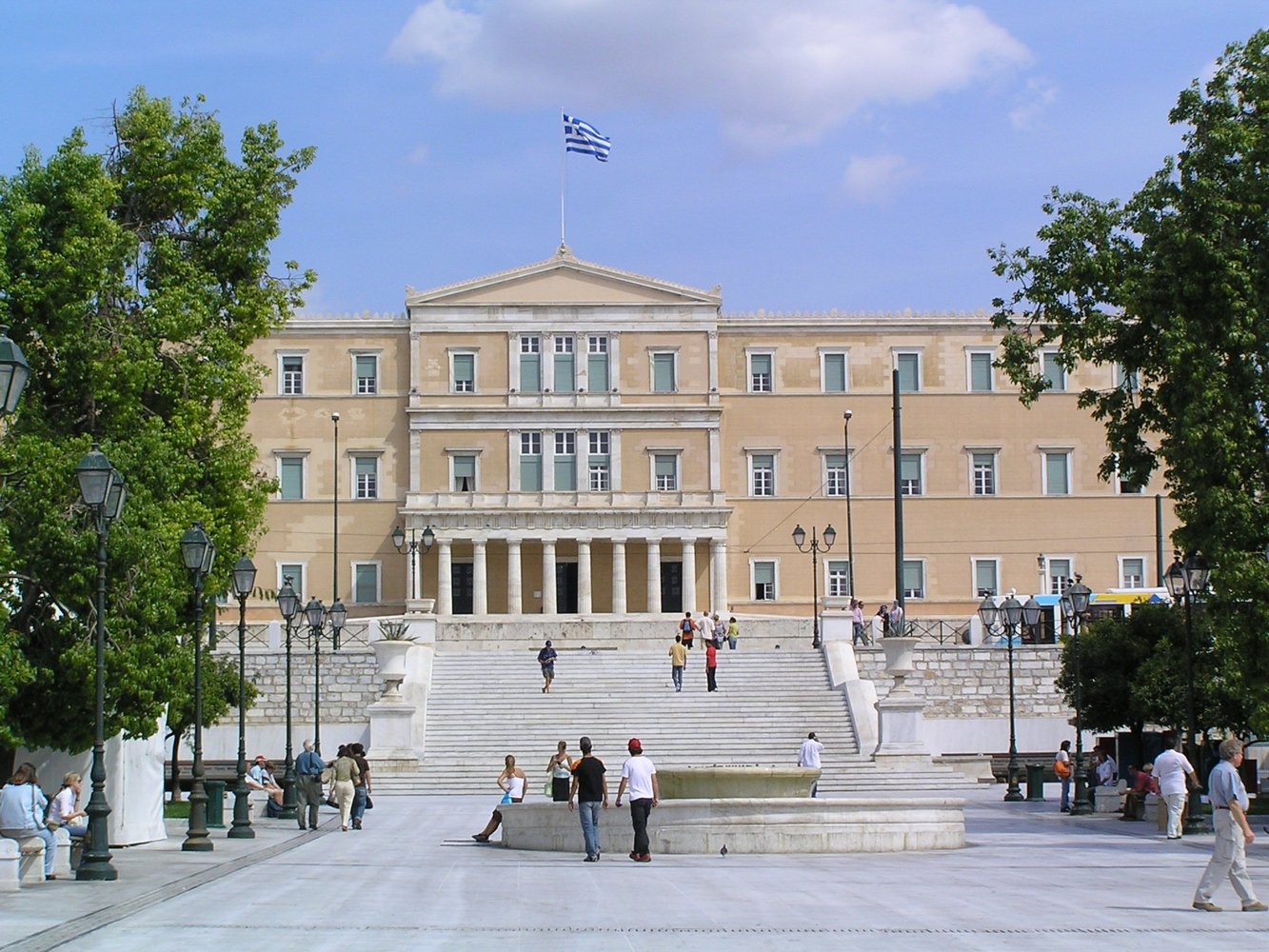
Syntagma Square has literally been the very heart of Athens ever since the city became the capital of the modern Greek state.
With the Greek Parliament building and the Tomb of the Unknown Soldier looming over it, it is rich with history and is the place where most major events of the last two centuries have taken place.
Its name in Greek means “Constitution Square,” a name granted by Greece’s first modern royal, King Otto, on September 3, 1843, after an uprising of the people. This was a smart political move, since the royal palace overlooked the square.
In 1934, the royal palace was turned over to the Greek Parliament, and ever since that time, Syntagma Square has been the place where all public protests and demonstrations have taken place.
Syntagma Square home to historic demonstrations and protests
In December of 1944, just after the departure of the occupying Nazi troops, a people’s rally at the square was marred by the killing of several Greek citizens from British fire.
This tragic incident became the precursor of the bloody Greek Civil War, which raged from 1946 to 1949.
In 2010 and 2011, Syntagma Square was the protest ground of “The Indignant,” the non-partisan Greeks who opposed the harsh austerity measures the bailout program brought to the country.
Even now, all protest rallies in Athens tend to terminate there, with Greeks shouting angry slogans toward the Parliament building. In recent years close to one million people protested regarding the Macedonia naming issue at the square.
As a visitor, one really must enjoy all the great things this lively square has to offer, because the heart of Athens pulsates there. Here are ten things that every visitor, not to mention every Greek citizen, must do:
Take a tour of the Greek Parliament, right next to Syntagma Square
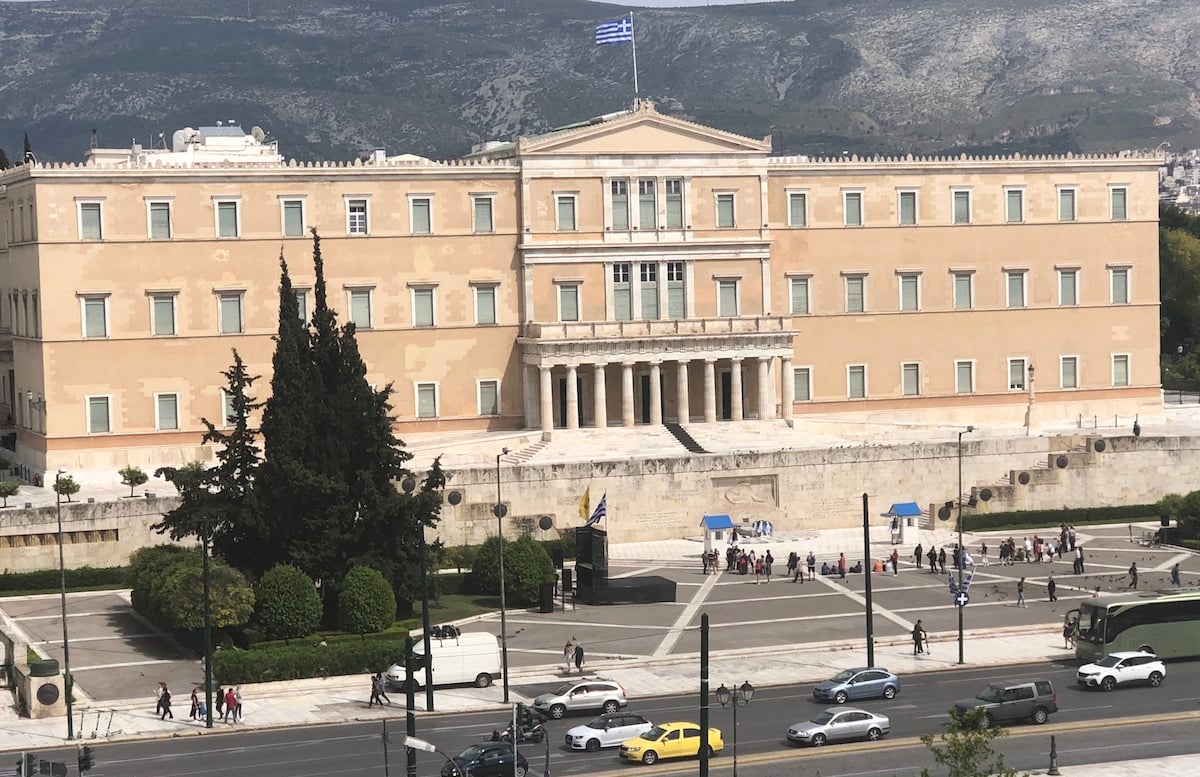
Foreign visitors can visit the Hellenic Parliament for free. English-language guided tours are held every Friday and Monday at 3:00 PM during the months of June, July and September.
Each hour and a half-long guided tour offers visitors the opportunity to discover the Assembly Hall, as well as to learn about modern Greek history, the form of government in Greece, parliamentary procedures and the history of the Hellenic Parliament building itself.
The location for the royal palace, which later became the Parliament building, was chosen by the Munich Academy of Arts and the official architect of the Bavarian court, Friedrich von Gaertner (1791-1847), who also built the structure.
On February 6, 1836, its cornerstone was laid at the highest, easternmost point of the city.
Gaertner designed an austere, functional and compact building which
respects the heritage of ancient Athens, in keeping with the ideas of
urban classicism.
It is accessible from all sides. Its four exterior wings have three floors each, while the middle wing has two floors and two courtyards as well as staircases which facilitate contact between the floors.
Take a moment of silence at the Tomb of the Unknown Soldier
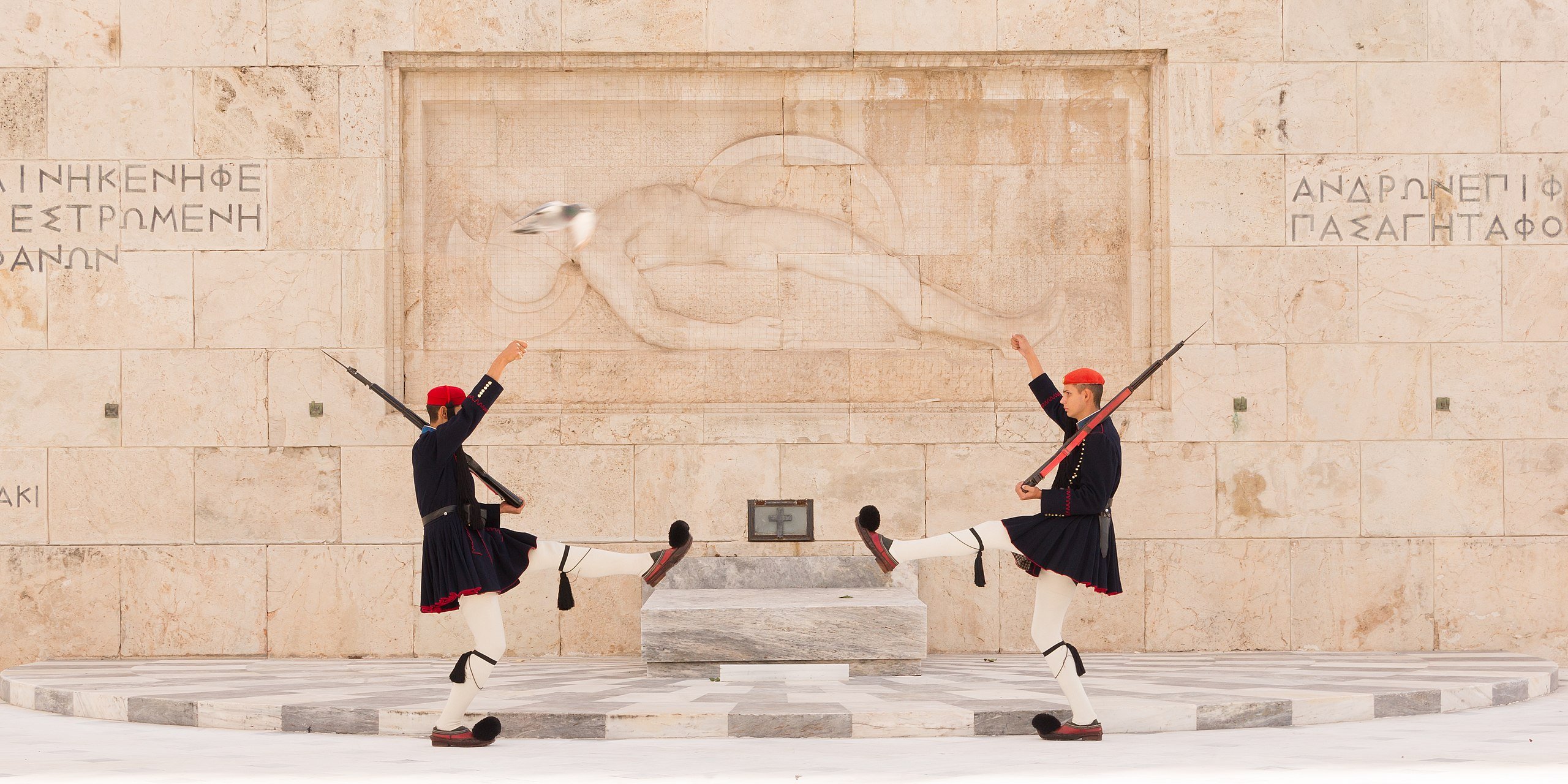
Sculpted by Fokion Rok between 1930 and 1932, before the royal palace became the Greek Parliament building, the Tomb of the Unknown Soldier was an initiative of dictator Theodoros Pangalos in 1926.
It is a cenotaph which commemorates every single one of the unknown Greek soldiers who has ever died for the homeland.
The sculpture represents a nude male figure of a dead warrior lying on the ground. He holds a circular shield in his left hand and wears an ancient Greek-style helmet.
The representation of the body gives the impression that the Unknown Soldier is ready to arise at any moment.
The names of battles where many Greek lives were lost in recent history are inscribed into the beautiful cream-colored limestone walls around the sculpture.
Watch the Changing of the Presidential Guard
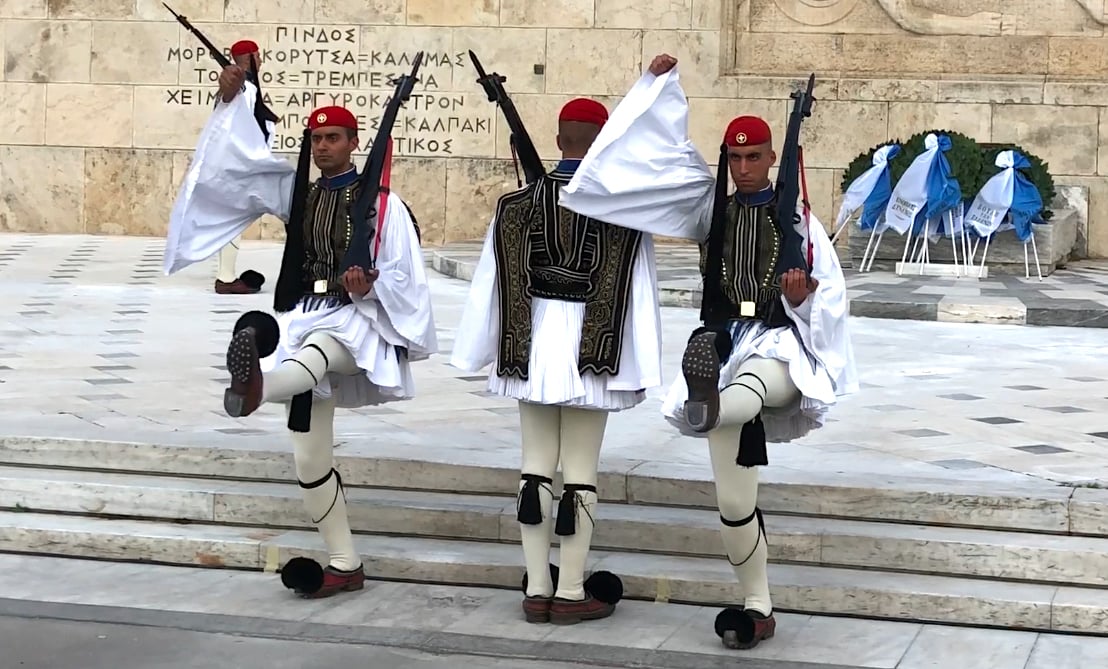
A great attraction for Greeks and tourists alike is the ceremonial changing of the guards at the Tomb of the Unknown Soldier, which occurs every hour on the hour.
The Evzones, dressed in the resplendent traditional national uniform, are the presidential guard who also serve as the protectors of the monument.
On Sundays, the soldiers are dressed in the traditional uniforms of the 1821 Greek freedom fighters.
During the week they wear the more modern version of this outfit. They remain stationary and silent for one hour, and the guards change every hour. It is a ritual which everyone should admire at least once.
Relax in the National Garden in Athens
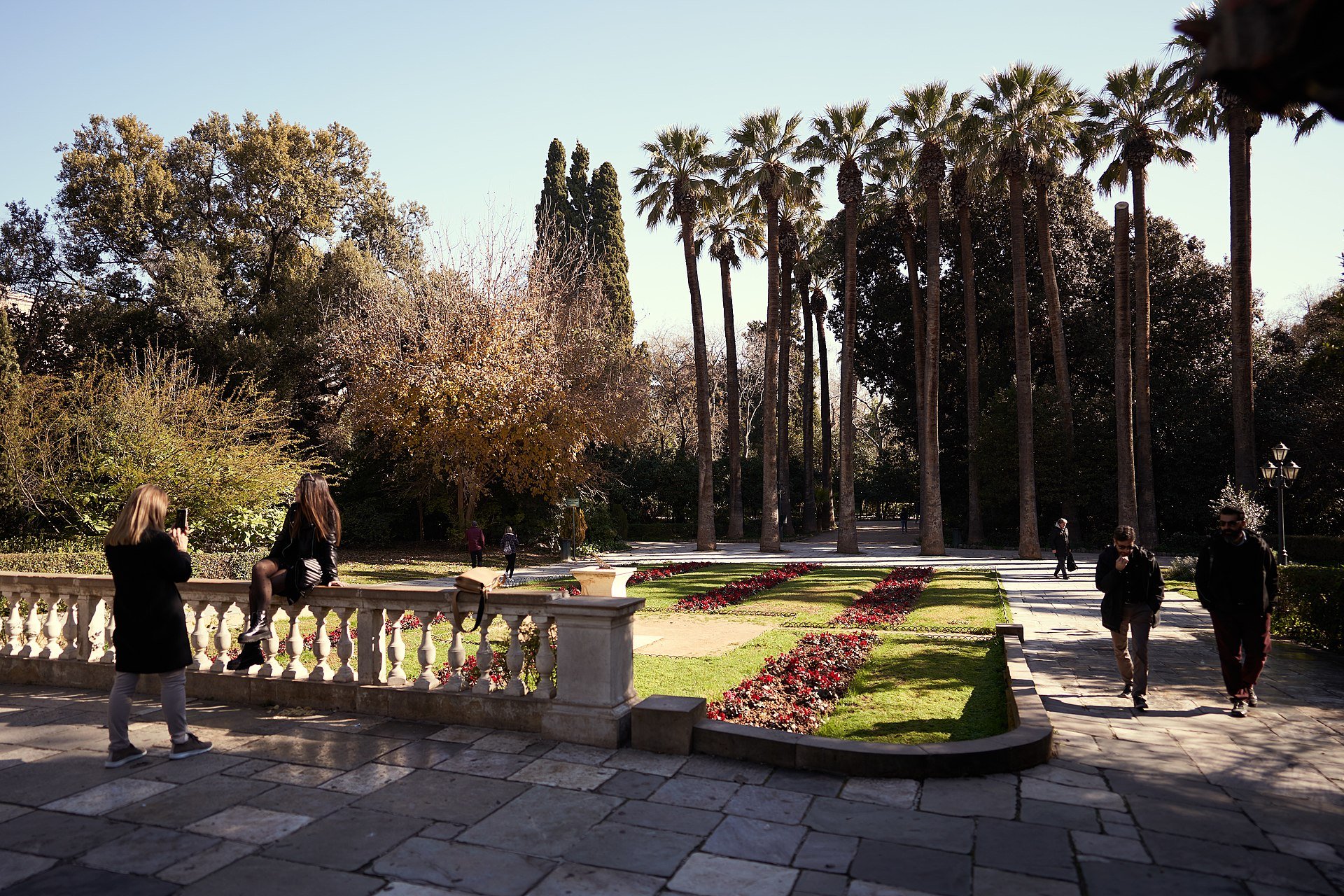
Right next to the parliament building and Syntagma Square lies Greece’s National Garden which, together with the Zappeion Hall Garden, includes 24 hectares full of rare kinds of flowers and other plants, as well as trees.
Birds of all kinds are frequent visitors to this stunning oasis of green in the city.
Before it was renamed the “National” garden, the area was called the “Royal” Garden or “the Garden of Amalia,” the Queen to whom the garden owes its existence.
Queen Amalia, the wife of King Otto, was so smitten with her garden that she is said to have spent at least three hours a day personally taking care of it.
She herself also planted the iconic 25-meter (75 foot) high “Washingtonia” palm trees which now tower over the other garden plantings and serve as the focal point when one enters the garden from the gate on Vasilissis Amalias Avenue.
Taking just a few steps into the garden allows one to completely escape the craziness of the city.
Shaded by eucalyptus trees, its benches make an ideal spot to bury oneself in a book, make new acquaintances or even to take a nap on the grass.
In the summer months, once you enter, you notice the immediate drop in temperature, as the Garden is a welcome oasis in the heat.
Enjoy Athens’ street buzz at Monastiraki

Less than one kilometer away from Syntagma Square is the bustling Monastiraki area.
Literally meaning “Little monastery”, this is a flea market area in the old town of Athens, full of tourist shops selling souvenirs and Greek delicacies.
The area is named after Monastiraki Square, which in turn is named for the Church of the Pantanassa which is located within the square.
The main thoroughfares of this area are Pandrossou Street and Adrianou Street.
It is bustling there during all hours of the day, seven days a week, while the enticing scents coming from nearby souvlaki and kebab eateries permeate the air.
Take a stroll and have a bite in Plaka

Right below Acropolis Hill lies the oldest neighborhood in Athens, founded when the city had a total population of 7,000.
The very first Athenian homes were built here; amazingly, the very first house ever to be built in Athens is preserved and displayed on Adrianou Street.
Only one kilometer away from Syntagma, the Plaka area has always been the main tourist hangout, and it remains very popular with Athenians as well.
It boasts restored nineteenth-century neoclassical homes, pedestrian streets, shops and restaurants, as well as picturesque ruins from the city’s Roman era.
Another popular attraction in Plaka is the Anafiotika, located on the northernmost slope of the hill of the Acropolis.
This neighborhood’s tiny, exquisite, white-washed houses were built by the workers who restored the Acropolis after the liberation from the Ottomans.
There you will also find the first university of Athens before it was relocated to central Athens. Its an oasis of calm and peace within the city, and there are many green spaces in which to relax.
Although it is full of packed tavernas and coffee shops, the area has a unique calm, as if visitors are unconsciously in awe of stepping on the very ground where Western Civilization itself was born.
Have coffee on the roof of the Public bookstore for a bird’s eye view of Syntagma Square
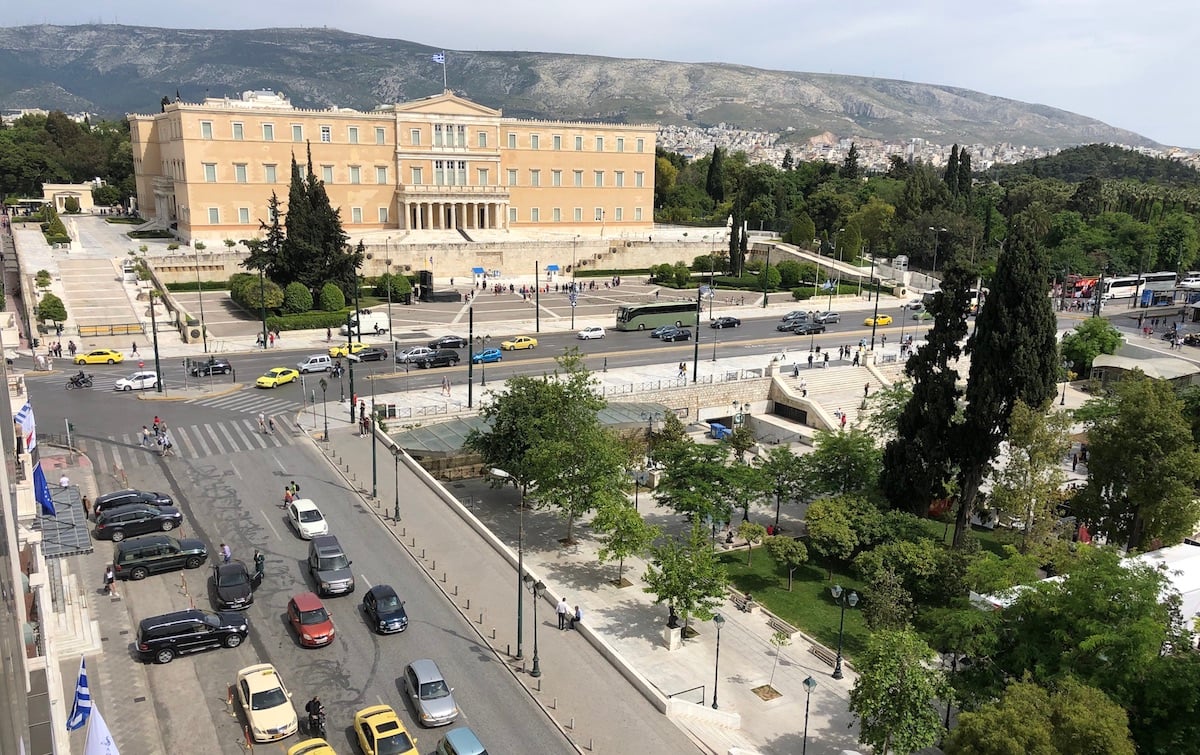
A wonderfully-restored neoclassical building on Syntagma Square houses the Public bookshop and technology store.
The cafe on the roof is a great meeting place which also offers a panoramic view of Athens’ iconic square. This rooftop is also ideal for watching protest rallies. If that’s your thing.
Shop ’til you drop along Ermou Street
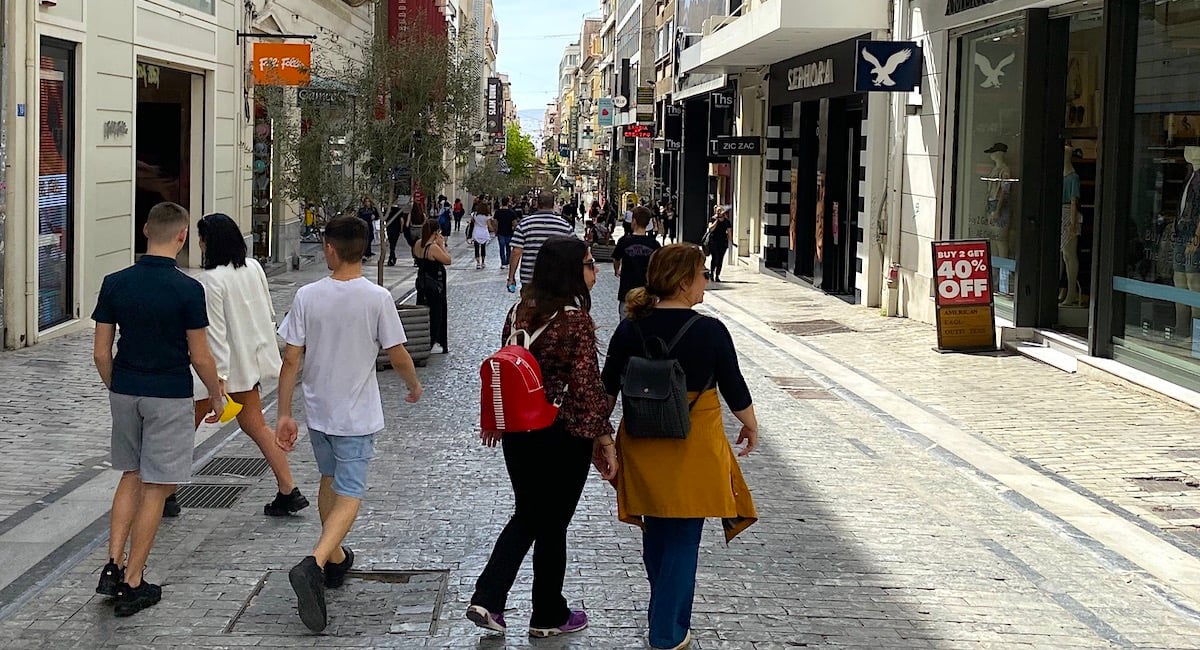
Ermou Street is the biggest and busiest shopping street in Athens, and it bustles with activity on weekdays.
The street starts at Syntagma Square, cuts through Monastiraki Square and ends in the Gazi area. But it is the pedestrian section of the street, with its glamorous shops, which are responsible for its fame.
It is one of the most expensive streets in the world vis-a-vis the rent that store owners pay, and this is the street with the most boutiques which are part of international chains.
Crossing Ermou Street, you get to see Greek citizens of all ages, from all walks of life.
Visit the museum at the Syntagma Square metro station

It was only natural that when the Attiko Metro company dug into the ground to lay the foundations for the Syntagma station, many antiquities were discovered.
Some of them are exhibited at a dedicated room inside the station.
A visit to the Syntagma Metro Station Archaeological Collection is a must. Athens’ busiest metro station is also a place where many public events take place.
Concerts, lectures, trade fairs, seasonal events and all kinds of activities are held there and it is likely that visitors will always find something of interest.



Comments
Post a Comment